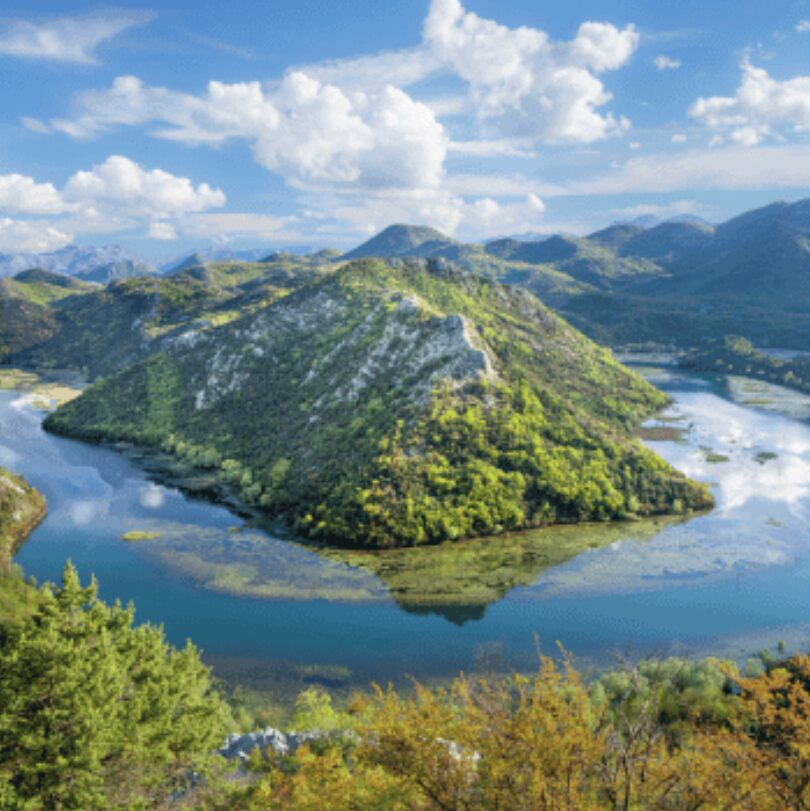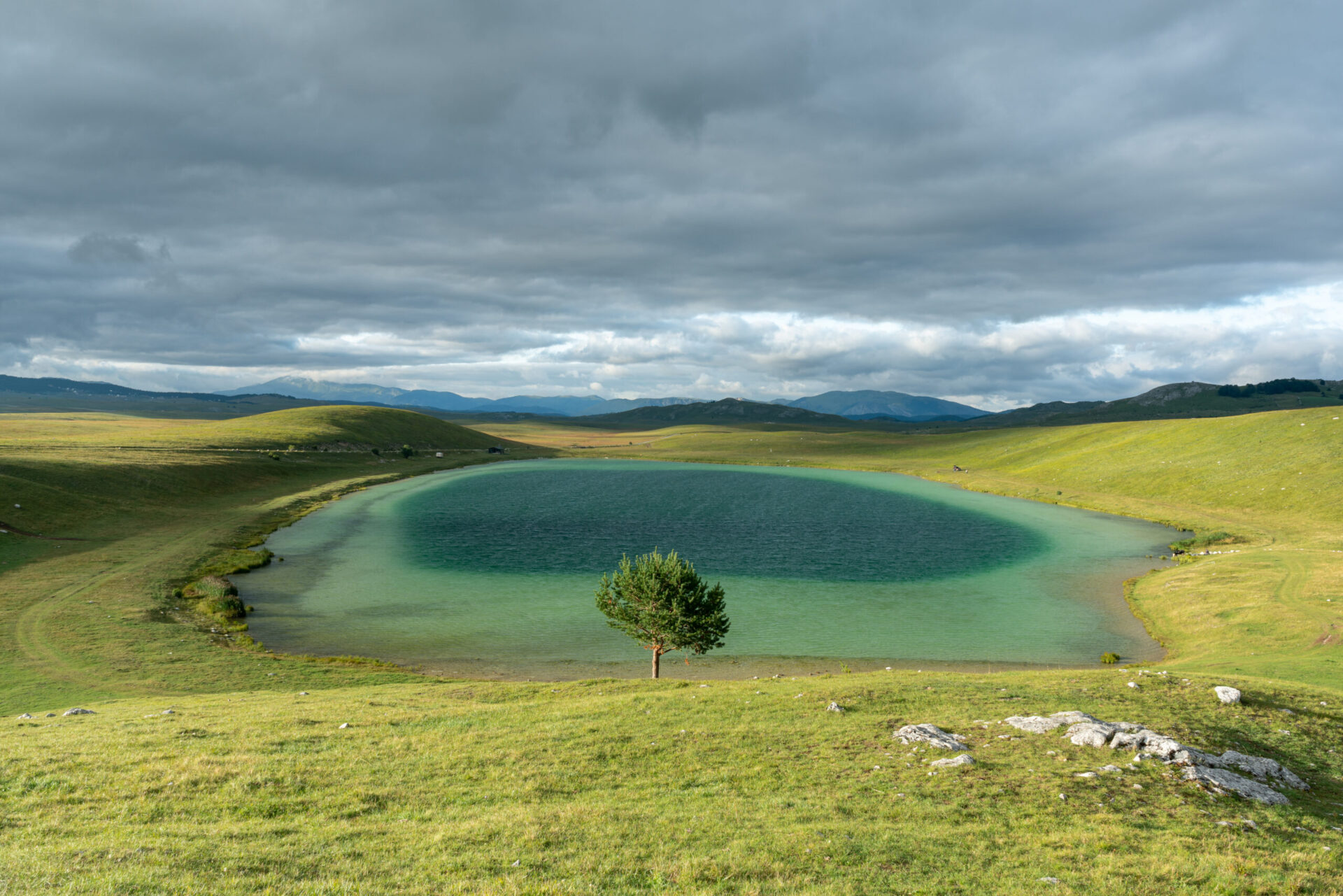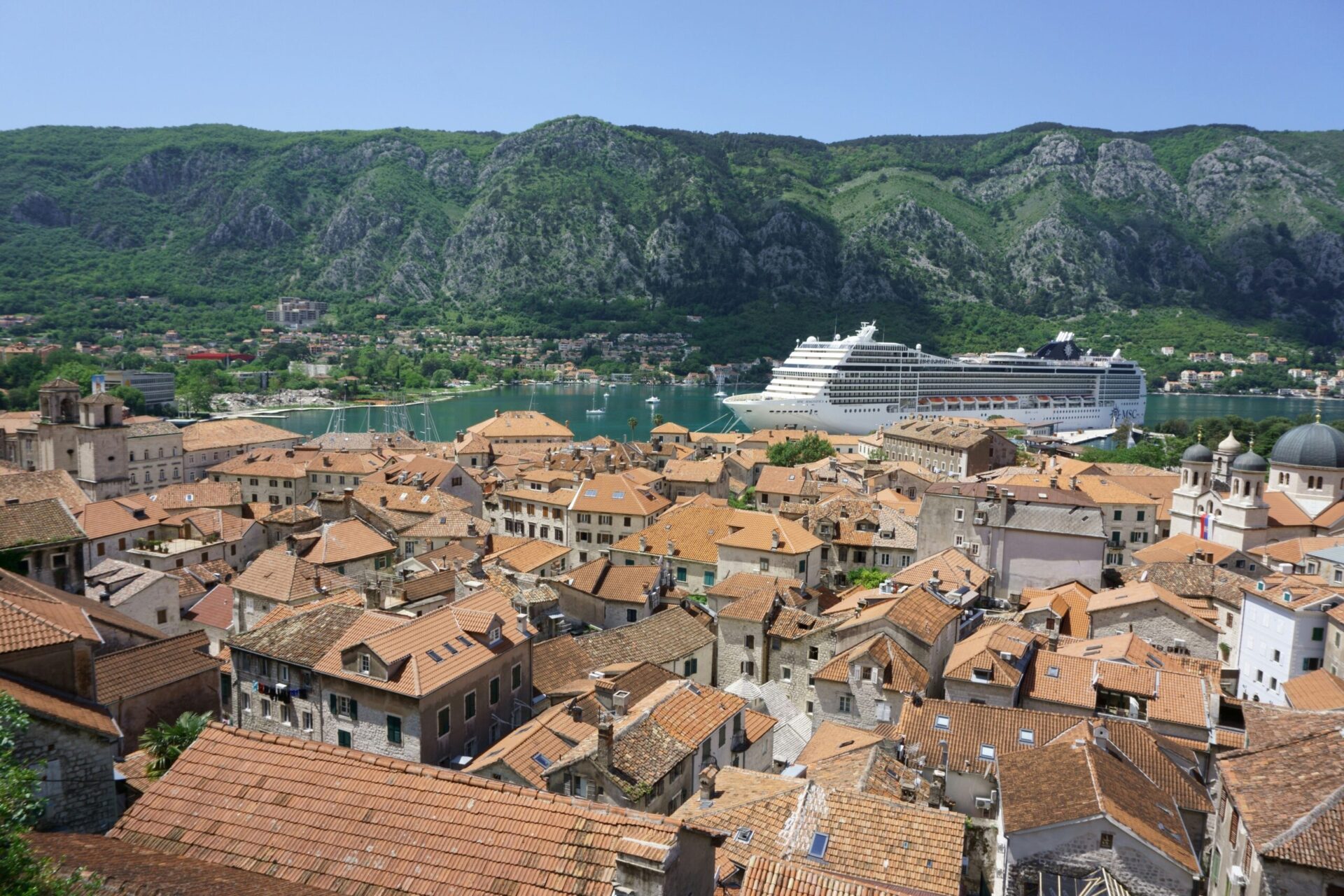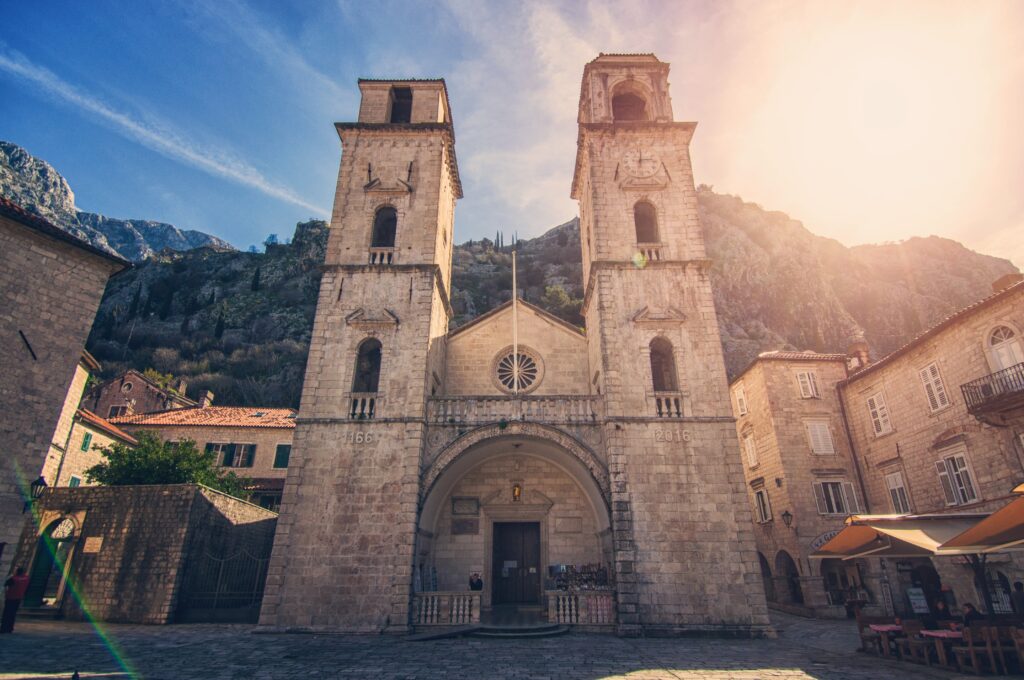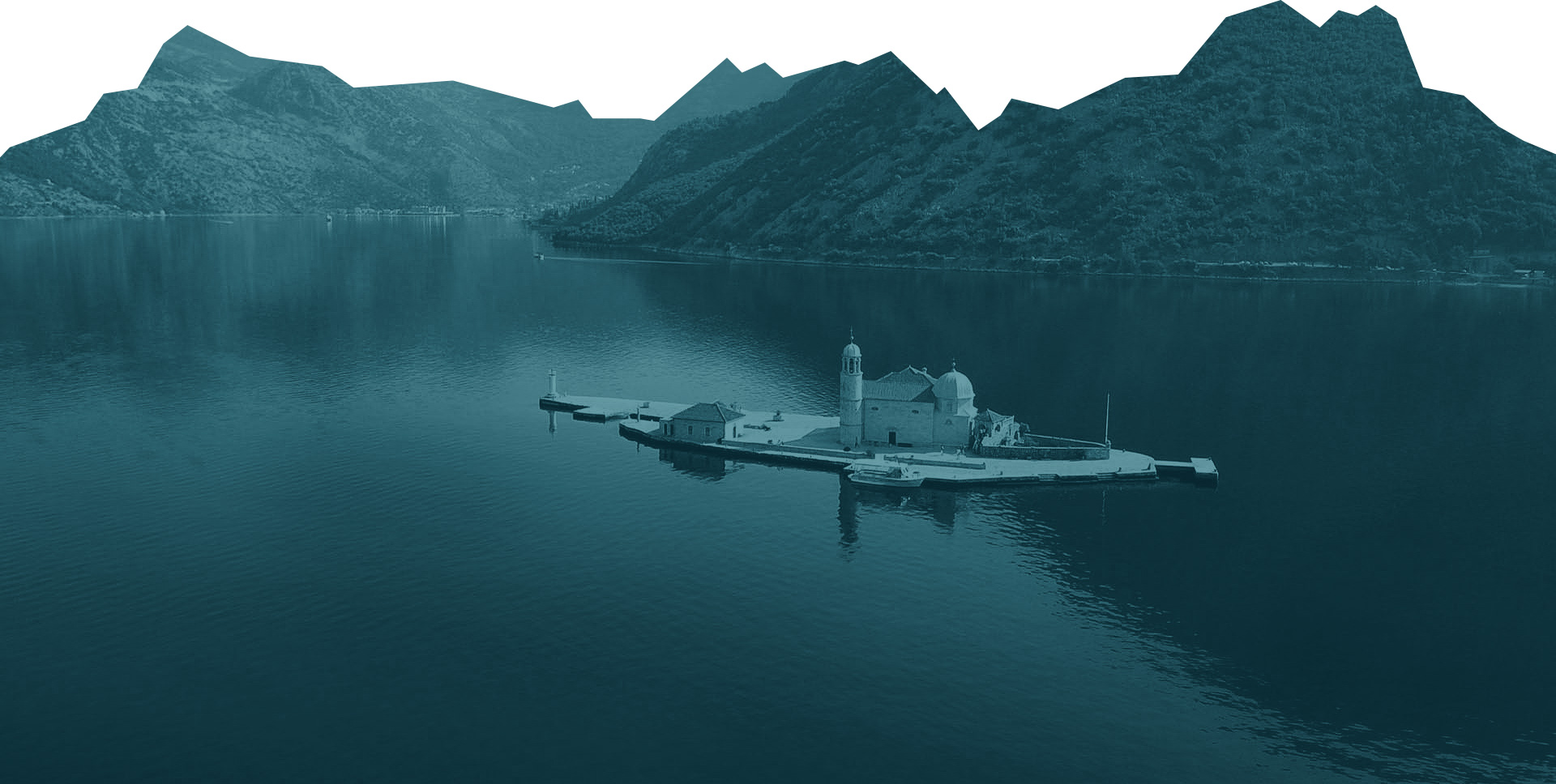Montenegro
Kotor
Kotor is a fortified medieval city located at the most secluded point of Boka Bay (Bay of Kotor). Set between mountains and water, the UNESCO World Heritage Site is one of the largest architectural entities in Montenegro.
Kotor town was protected by a medieval fortress and stone wall, which remains intact today. The historic city plan remains largely preserved, allowing visitors to explore narrow winding streets and city squares accented by church buildings and palaces.
Kotor’s mixed architecture tells of its vibrant history. A number of gothic Gothic and Romanesque buildings stand intact. These include several churches (St. Luke’s, St. Anne’s, St. Paul’s, and St. Mart Collegiate) and Drago Palace. The reconstructed Buca and Bizanti palaces also showcase this architectural history.
The baroque period also left many churches (St. Joseph’s, Our Lady of the Angels). Also palaces (Pima, Grubonja, Grgurina), as well as middle-class residences. The most recent large scale constructions to the Old Town were made during the Austro-Hungarian administration. It was held in the 19th and 20th centuries, standing out starkly within a predominantly medieval Kotor.
Kotor has long bridged the Mediterranean and Balkan hinterland, weaving a rich cultural fabric. Today, Kotor offers a glimpse into history balanced with contemporary Montenegrin culture. Visitors can find a wealth of local treasures, from authentic cuisine and artisan goods to cultural events and music performances.
Kotor – A Town That Takes Your Breath Away!
Some places leave you speechless, and Kotor is one of them. You won’t know what takes your breath away more. The moment you arrive by boat, seeing the town embraced by towering mountains, or when you stand above the bay, taking in the view of red rooftops reflecting in the green waters. Or perhaps, it’s when you find yourself wandering through its labyrinth of intertwined stone streets, where every turn reveals another palace, another hidden square, another centuries old church.
For those who seek adventure
Climbing the fortress is an experience of its own. Some find it challenging, others impossible, but for those who reach the top, the reward is beyond words. The view stretches across the entire Bay of Kotor, a sight so stunning that it makes every step worth the effort. And what’s better after an adventure than the best gelato in town? We know exactly where to find it, of course, right in the heart of Kotor’s Old Town.
As the day turns to evening, Kotor transforms once again. Sunlit stone squares give way to a magical play of light and shadow, as reflections of lanterns dance across ancient walls. The soft sounds of live music echo through different squares, inviting you to slow down, take a seat, and truly soak in the atmosphere. Some places you visit. Others, you experience and never forget. Kotor is a place that stays with you, a town of endless charm, history, and beauty, waiting to be discovered. And if you’re looking for a memory you’ll cherish forever, climb the fortress, take in the view, and let Kotor’s magic do the rest.
The Noble City of Kotor – A Place Where History Still Breathes!
Nestled between the mountains and the sea, Kotor’s old town is one of the most beautiful and well preserved medieval towns on the Mediterranean. Surrounded by imposing stone walls and a fortress that climbs the steep cliffs above, this city tells the story of centuries of wealth, power, and maritime tradition.
For generations, noble families shaped Kotor’s history, leaving behind palaces and churches that still stand today. Trade, particularly in salt, was a major source of wealth, and the city thrived as a center of maritime commerce.
Local shipowners, captains, and sailors connected Kotor to the most important ports of the Mediterranean, while craftsmen and merchants filled its streets with bustling trade.
To prevent corruption, there was a time when Kotor’s mayor was elected for only one month. That way they were ensuring no one could hold power for too long. This system, along with strong trade networks, helped Kotor flourish.
Today, the city holds around 80% of Montenegro’s cultural monuments. It servs as a lasting testament to the former glory, wealth, and lives of its now forgotten residents. Walking through its narrow streets, past stone palaces and ancient churches. You step into a world shaped by centuries of ambition, adventure, and seafaring pride.
